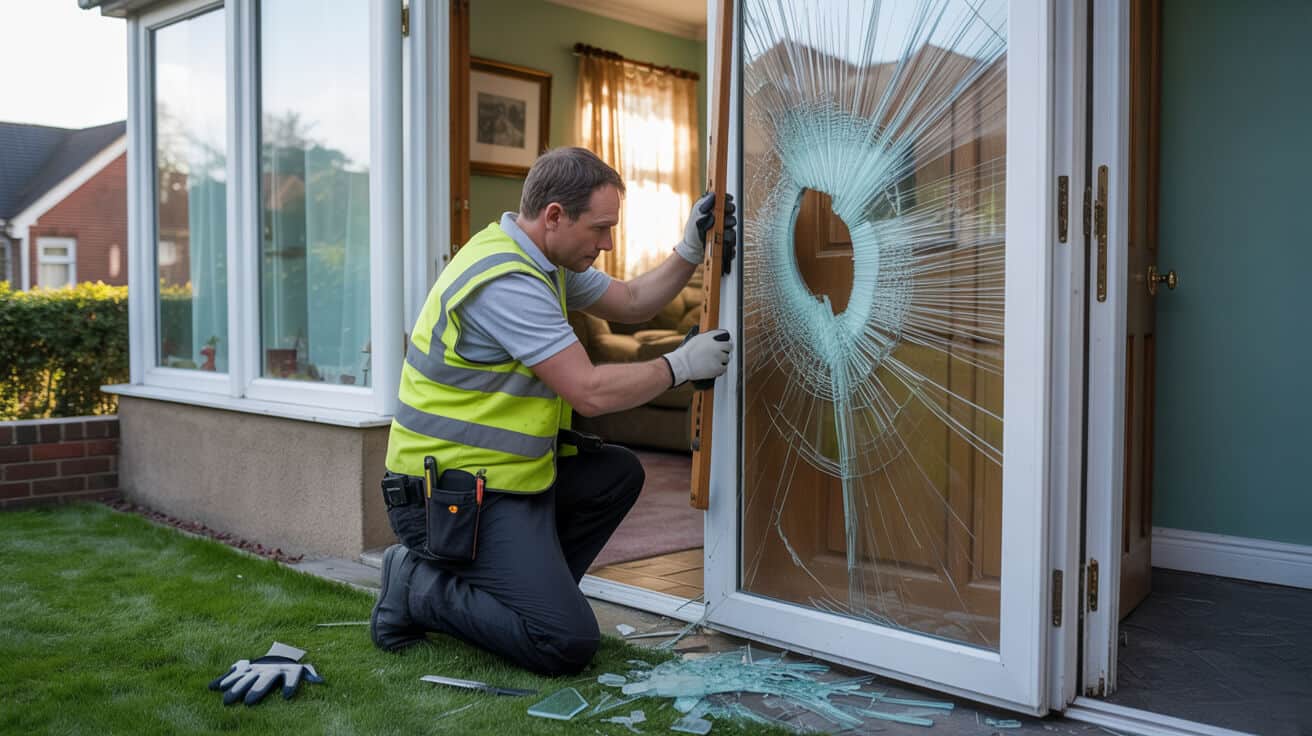 A Tenant’S Guide To Reporting Maintenance Issues Effectively
A Tenant’S Guide To Reporting Maintenance Issues Effectively

What’s the Fastest Way to Get Your Repairs Sorted as a Tenant?
When your heating grinds to a halt, water starts creeping across the ceiling, or your electrics flicker for no reason, waiting for miracles only extends your discomfort. Ignoring repairs isn’t just inconvenient—it risks your health, your deposit, and your legal standing as a UK tenant. If you want results, evidence and a sharp communication trail are your power moves.
A well-documented repair request is your passport to a safer, faster fix.
Instead of crossing your fingers, turn yourself into a credible tenant whose issues demand a response. This guide will walk you through step-by-step strategies that drive action, bypass common fob-offs, and protect your rights—no matter if you rent from a high-street agent or a private landlord. At every stage, All Services 4U is your sidekick, blending genuine compliance expertise with clear empathy toward tenants.
Speed Wins—But Only With Proof
Fast action kicks in when you present clear facts. Reporting issues without delay, and supporting them with dates, images, or video, puts your request at the front of any maintenance queue. Vague “the boiler’s a bit dodgy” messages rarely see prompt results; “Boiler stopped at 3pm, 10 Jan, with photo attached” builds an unignorable, action-ready case.
Why Cutting Corners Backfires
You may feel tempted to mention repairs in passing, send a quick text, or wait for things to improve. Sadly, “informal” rarely travels quickly—or gets remembered when the agent is swamped. The error? No evidence, no urgency, no legal leverage.
The fastest way to repairs isn’t luck. It’s precision: detail, evidence, and a documented trail that nobody can brush aside.
How Do You Pinpoint the Real Issue and Build a Solid Evidence Trail?

Before typing out a single message, get surgical with your facts. Precision, documentation, and impact get repairs logged, triaged, and solved faster—while protecting your position if things escalate. You’re not just asking for something; you’re building an evidence stack.
Two photos with dates trump 200 words of description.
Details Get Results—Not “The Usual” Requests
Snap photos from multiple angles—think insurance claim, not complaint. Spell out what happened, when, and how it affects your day. Instead of “shower broken,” lead with “15 June, shower won’t heat after attempts to reset, can’t wash before work.”
- Take photos and upload timestamps—every phone does it by default.:
- Record video for intermittent problems, like strange noises or drips that only happen at certain times.:
- Keep a log: Track symptom dates, any worsening, even what you tried yourself.:
Combine your images, logs, and a clear summary. You’re solving two problems at once: you’ll help the fix to land on the right specialist’s desk, and you’ll have proof ready if disputes arise.
Convey the Human Cost—Don’t Just List the Fault
Reporting isn’t about sounding dramatic; it’s about making it real for the agent or landlord. Explain the impact: “My young daughter’s cough worsened since the damp patch appeared in her bedroom. We’re using extra duvets due to loss of heating at night.” When you humanise the issue, you force urgency and position yourself as a responsible, aware tenant.
- Tie symptoms to daily life: sleep loss, work disruption, health concerns.:
- If you have vulnerable tenants in your household, say so—agencies and councils must prioritise these cases.:
This level of detailing moves your case up the priority ladder and builds sympathy—as well as a stronger claim, if you need to escalate.
What’s Hidden in Your Tenancy Agreement That Can Help or Slow You Down?

Your tenancy agreement isn’t just a formality—it’s your playbook for reporting, response time, and knowing who’s on the hook when things go wrong. Most tenants skip the fine print, missing crucial details that can make or break their repair process. But three contract clauses are usually the difference between quick progress and frustrating stalemate.
Small print in your lease is the rulebook for urgent repairs—don’t let it catch you out.
Three Clauses That Decide Your Outcome
-
Reporting Protocol
Is written notice needed, or will a phone call do? Always default to email or agent portal—even if your landlord seems friendly. This gives you an unbreakable legal trail. -
Definition of Emergencies
What’s “urgent”? Some contracts subclassify emergencies—heating in winter, electrics, major leaks. Spell these out to avoid a slow response to what you know is critical. -
Who’s Responsible?
Landlord, agent, or third-party repairs company: who’s supposed to act? If you send messages to the wrong person, you give them plausible deniability about late replies.
Don’t treat grey areas as “maybe it’ll be fine.” If in doubt, forward your lease to Shelter or Citizens Advice for a quick review. Label and keep all correspondence so you’re never scrambling for proof.
Know Where the Line Sits—Landlord vs. Tenant
You’re responsible for light bulbs, everyday cleanliness, and battery-powered smoke/carbon monoxide alarms. Landlords legally take care of structure, heating, water, electrics, and “installations for sanitation” under Section 11 (Landlord and Tenant Act 1985). For confusing issues, double-check your agreement, note ambiguous sections, and store annotated copies. This stops disputes landing on your doorstep.
- Skimmed agreements lead to missed deadlines and awkward standoffs.:
- Organised documentation slashes your time to resolution—and closes legal loopholes for others.:
How Can You Report Repairs the Right Way—and Get Proof Every Time?

The moment you send a clear, documented repair request, you take control. UK law puts weight on written records, not hearsay or “I told you last week.” Phone calls feel faster, but written submission is a force multiplier—protecting you, and catalysing action behind the scenes.
Written requests secure your rights and rev up response speed.
The Anatomy of a Un-ignorable Repair Request
- Time and Date: Lead with “On [date], [problem] started/worsened.”
- Specifics Over Emotions: “Kitchen hot tap leaking at base, leaks 200ml overnight when off. Can’t wash dishes properly.”
- Self-help Attempts: “Attempted to tighten fitting, no improvement.”
- Photos/Videos: Attach clear images, named by location or issue.
- Reporting Method: Use official agent portal or email for an immutable trail.
A repair request like this makes agents’ jobs easier—and makes it far more awkward to ignore you when your request is on the record.
Systematically Archive Everything
- Keep replies, even acknowledgements, in a folder.:
- Store every image and message by repair and date.:
- Copy legal templates (from Shelter or Citizens Advice) for ironclad phrasing.:
Always end your message asking for confirmation: “Please confirm you’ve received this.” If you have housemates or building managers, CC them. This closes down every excuse for miscommunication and shows that you operate with diligence and precision.
Which Records Should You Keep (and How Can You Organise Them Without a Headache)?

When it comes time to escalate—whether you’re pursuing a stubborn repair or fighting to keep your deposit—your personal repair dossier is your secret weapon. Scattered texts and unsorted inboxes leave you scrambling; one well-structured folder puts you in the driver’s seat, making your case unassailable.
A sorted repairs archive is proof of your efforts—and often the key to winning any dispute.
Five Key Elements to Include
- Original Repair Request: Email or portal ticket—first date is critical.
- All Correspondence: Every reply, chaser, or status update from landlord or agent.
- Images/Videos: File names should include date and room (e.g. “2024-02-01_kitchen_tap_leak.jpg”).
- Notes from Phone Calls: Date, time, who you spoke to, and what was promised.
- Screenshots of Online Forms: Proof of submission via portals or apps.
Use a digital folder (named “Repairs” or “Maintenance”) and create a subfolder for each issue. Matching physical copies in a labelled envelope is a great backup during serious disputes.
Leverage Your Files—They Do the Talking for You
When weeks go by with little movement, a bulletproof summary like “Reported [boiler leak] 12 Feb, chased on 18 & 23 Feb, no reply” shows tenacity. Councils and dispute services take this volume of evidence seriously, often ruling in your favour if the landlord claims “I never received anything.”
What Are the Legally Expected Repair Timelines for Tenants in the UK?

You have rights, but only if you know the clock you and your landlord are working to. Most councils and agents follow industry repair targets—these numbers are your ammunition when chasing or escalating.
Transparency on timescales puts you and your agent on the same timeline.
Key UK Repair Response Times at a Glance
Here’s the baseline used by UK councils, agents, and large landlords:
| Type | Typical Response Time | Examples |
|---|---|---|
| Emergency | 24 hours | burst pipes, total power/cold, major leaks |
| Urgent | 3–7 days | Hot water out, significant but non-hazardous leaks, broken windows (winter) |
| Routine | 28 days | Minor plumbing, wonky locks, cracked tiles |
If you’re told “as soon as we can” or “there are no set times,” reference these standards: “I understand the expected response for [issue] is [X days], per government guidelines.”
Dealing with Missed Deadlines
Once a repair passes its timeline, don’t sit and hope. Send a dated chaser referencing the standard: “As per expected turnaround, [issue] should be fixed by [date]. Can you confirm the schedule?” This chaser doubles as evidence if the situation needs escalation down the line.
What Steps Can You Take If Repairs Are Not Happening—or Are Constantly Delayed?

You’ve chased. You’ve provided every document. Silence or vague promises persist. This is when escalation becomes your best friend—and the law stands behind tenants who play by the rules.
Formal escalation is not troublemaking—it’s defending your right to a safe home.
Escalate Like a Pro—Don’t Let Things Drag
- Draught a summary email: List every report and chaser, attach key images, and reference the time elapsed.
- Announce Next Steps: “If not fixed in 7 days, I will ask the council’s Environmental Health Team to assess the property.”
- Stay Calm and Factual: Anger gets you nowhere, but concise professionalism moves you up the queue.
When the Council Has Your Back
Contact your local council’s private rental or environmental health team if:
- Emergencies are left unresolved
- Health or safety is at risk (electrics, gas, heating, severe leaks, vulnerable people)
- Your repeated, properly documented requests have been ignored
Walking in with a thorough, calm “case file” instantly separates you from a tenant who makes threats without proof—forcing swifter council action.
How Do You Get the Council to Step In—and What Actually Happens Next?

Pushing through to council involvement is a mark of responsibility, not “being difficult.” Councils enforce repairs through legal orders—your homework and discipline get you to the top of their priority list (and make your landlord pay attention fast).
Enforcement works when you bring a clear timeline and proof of repeated efforts.
What Evidence the Council Needs
- Every dated, written complaint (emails, agent portal, letters)
- All landlord and agent replies
- Dated photo/video evidence
- Detailed timeline of attempts made
- Health/disability evidence, if applicable
- Any statements from co-tenants or neighbours
Submit via the council’s online portal, attach your bundle, summarise the safety or comfort risk, and reference key dates.
What to Expect—Inside the Council Process
Depending on urgency and evidence, your council can:
- Issue a formal improvement notice (deadlines for the landlord)
- Order emergency repairs—then bill the landlord directly
- Levy fines or even prosecute for serious or repeat neglect
You may also get support connecting with local tenant advocacy services who strengthen your case and safeguard your deposit, health, and peace of mind.
Why Acting Directly and Quickly Protects Your Home, Health, and Deposit
Delays don’t soften with time—they harden into headaches, threaten your comfort, and endanger your rights. The tenants who react with speed and evidence don’t just fix problems—they keep their deposit, their health, and their pride.
Hope is not a strategy—evidence beats hearsay every time.
When a Professional Makes All the Difference
Not every landlord or agent is equipped to handle complex repairs (think: faulty electrics, major leaks, persistent damp). This is where a seasoned, certified specialist matters.
All Services 4U’s accredited, multi-trade technicians bring not just fast fixes, but also full regulatory knowledge. Every job is documented to protect you: from initial request to final fix, photos, and compliance paperwork.
- Quick reporting + evidence = stronger claims:
- Certified repairs + clear documentation = deposit protection:
- A trusted partner cuts out disputes and keeps everyone on track:
If the repair is sorted by professionals and logged properly, argument and friction are replaced by trust and certainty.
Connect with All Services 4U Today
Your living space, peace of mind, and legal rights all deserve better than another “maybe next week.” Act fast, document everything, and choose partners who treat your case with the seriousness it demands.
- Why All Services 4U?:
City & Guilds-certified, multi-trade professionals—meticulous, prompt, and friendly—who solve problems and close every job with a paper trail for your protection.
- Start now: Take a photo, jot a date, and send your written repair report today.
- Need real help?: All Services 4U stands ready with quick, code-compliant solutions, professional repairs, and the reassurance of a fully documented process—so *your* rights, health, and deposit are respected, every time.
Your next hassle-free repair is waiting. Take charge and let All Services 4U be the difference between “not yet” and “done right, first time.”
Frequently Asked Questions
How can tenants ensure maintenance issues are reported and resolved without unnecessary delay?
Your maintenance request stands out—and gets acted on quickly—when it’s clear, factual, and supported by visual proof. Precision in your communication, a written trail, and evidence not only protect you but shift your issue from the bottom of the queue to the fast lane for resolution. Describe exactly what’s wrong, where, and when. Attach photos or video with a timestamp, and include access options to help coordinate a visit. These steps make it easier for agents or landlords to triage and prioritise repairs, keeping your living space safe and comfortable.
What practical actions speed up landlord or agent response?
- Submit everything in writing: —via email or maintenance portals that log requests. Avoid verbal reports unless you follow up with a written summary.
- Always add time-stamped pictures or video.: Show the issue, its location, and any safety risks.
- State how the problem interferes with daily life: —for example, “No heating for three days” or “Mould spreading by bedroom window.”
- Offer flexible yet realistic access times: —if you’re not available, suggest a trusted friend or neighbour who can be there.
- Combine urgency with courtesy.: Polite, evidence-driven requests carry more weight.
A written request with sharp details and photos is your single best lever—agents and repair teams act faster when confusion is not an option.
How do you keep your request on the radar?
After you submit, always track the response: if you don’t receive confirmation within 48 hours (or sooner for urgent cases), follow up and restate the urgency. Save all correspondence in a dedicated folder—digital or print. Templates from official bodies (like Shelter or Citizens Advice) help you frame requests for maximum clarity. Property service firms such as All Services 4U also offer compliant documentation, adding further authority to your case if it needs escalating. Keeping everything sharp, organised, and calm makes resolution almost inevitable.
What are the legal repair timeframes in the UK and how should tenants handle slow responses?
By UK law, landlords are bound to strict repair deadlines. Emergencies—think gas leaks, electrical faults, or severe flooding—should see a response within 24 hours. Urgent but not life-threatening issues should be addressed inside a week; routine repairs within 28 days. These clocks start ticking the moment you submit a fully documented request. Relying solely on calls or informal texts leaves you in limbo; your best strategy is always clear, written communication.
How can tenants distinguish emergencies from lower-priority repairs?
- Emergencies (within 24 hours): No electricity, gas leaks, major water breaches, unsecured doors/windows, loss of essential heating in winter.
- Urgent (within 3–7 days): Leaks damaging property, broken locks, repeated boiler failure, escalating mould.
- Routine (within 28 days): Minor plumbing drips, cracked tiles, cosmetic issues not affecting safety.
Fast and factual reporting sharpens your legal rights and cuts down delays—a timestamped photo is worth hours of phone calls.
What tactics help if responses slip outside legal timeframes?
- Request time commitments in writing.: Reference the guidance from Shelter or your local council.
- Challenge vague or delayed replies: —remind the agent or landlord of the statutory timeframe and your past requests.
- Escalate to the local council’s Environmental Health team: if urgent issues are ignored, bringing your evidence bundle.
- Track every step: —dates, names, emails, and what was promised. If a firm like All Services 4U is handling the repair, their compliance logs strengthen your case.
By holding everyone to account and persisting with polite, step-wise reminders, you multiply your chances of rapid resolution and avoid being left with unresolved hazards.
What step-by-step escalation strategy works if landlords or agents ignore maintenance requests?
Tenants achieve results—not confrontation—by keeping escalation factual, structured, and evidence-based. Start with a written reminder, escalate with formality if there’s silence, and know when council intervention is the best option. The right order of steps enhances your leverage and keeps you protected by law.
What’s the sequence if your repair request is unanswered?
- Step 1: Send a written reminder, attaching original evidence and restating urgency. Request a prompt reply.
- Step 2: If silence persists, escalate to a formal complaint using templates from advice bodies or local authorities.
- Step 3: Use recorded post or trackable email for all formal communication from this point.
- Step 4: If the issue is health or safety related and the landlord remains unresponsive, call the Environmental Health team with your full evidence folder. Continue paying rent to protect your position.
Structured escalation—facts first, never threats—creates a clear trail that compels landlords or agents to act and stands up with the council if things escalate.
Where do specialists fit in for complex or stalled disputes?
All Services 4U stands ready to step in: supplying certified inspections, compliant documentation, and escalation-ready logs. Their expertise not only accelerates resolution but provides recognised proof if you need to involve legal channels or tenancy deposit schemes.
How do tenants build a bulletproof evidence bundle to support repair claims?
Your single best tool in a repair or deposit dispute is a tidy, time-sequenced file of every interaction, backed by photos or video. It’s more than insurance—it’s often what tips the balance in your favour and accelerates both agent and council responses. Each stage in your documented trail makes the case undeniable—whether the issue is minor or major, resolved quickly or sent to tribunal.
What essentials should every evidence package contain?
- Chronology: Keep all correspondence—emails, letters, portal messages—in a single, dated sequence.
- Visualities: Every photo or video should be clear, labelled by date and room; stick to originals when possible.
- Call or meeting logs: Note who you dealt with, when, and the outcome for off-record interactions.
- Invoices and receipts: Any remedial spends or temporary fixes should be logged; these can be reclaimed.
- Official templates: Attach any form or template used, which demonstrates you followed best practice.
A methodical bundle—rather than a flurry of messages—fast-tracks action and protects your position with councils, letting agents, and dispute services.
When is professional documentation advisable?
When an issue drags on or you’re preparing for council or legal escalation, independent inspections and HSE-compliant reports from All Services 4U add a layer of authority and rigour. They offer recognised third-party evidence that landlords, letting agents, and councils trust, substantially improving your leverage.
What rights protect tenants when they report repairs in the UK, and how should they be used?
UK law guarantees every tenant the right to a fit, safe, and well-maintained property. The Landlord and Tenant Act 1985, along with the Homes (Fitness for Human Habitation) Act 2018, forces landlords to deliver repairs within set windows and blocks any form of “revenge eviction” for requesting them. Your strongest position is always built by diligently following the process—report, record, escalate.
Which tenant protections are crucial in repair situations?
- Replacement of unsafe or broken essentials: The landlord must fix all essential problems, fast—heat, water supply, electrics, leaks.
- No fear of retaliatory eviction: Your right to a safe home overrides any threat or attempt to evict you for reporting.
- Deposit security: Deductions are only allowed for genuine, documented tenant-caused damage.
- Right to escalate: Councils have the muscle to order repairs and penalise non-compliant landlords.
The tenant who demonstrates a cool head and a complete record of every interaction is rarely left vulnerable—evidence is always your best ally when enforcing your rights.
How does expert help solidify your protections?
When property conditions impact health, or landlords stall, expert firms like All Services 4U provide inspections, certified logging, and reports accepted across the sector—from letting agents to deposit schemes to councils. This neutralises disputes and supports successful escalation, all while protecting your tenancy and well-being.
Why do some tenants secure fast, reliable repairs while others meet delay and frustration?
The biggest differences show up in communication style, documentation, and follow-through. Tenants who avoid phone-only conversations, keep emotions in check, and respond swiftly to delay are rewarded with faster outcomes. Those who rely on reminders or hope for action often get left behind. Professional, evidence-driven requests are rarely ignored—action starts when you show you’re serious, equipped, and organised.
What habits accelerate repair resolution and separate successful tenants from the rest?
- Written, evidence-backed communication: Cut through confusion—clarity beats anecdotes.
- Persistence, not pushiness: Follow up firmly but always reference facts and timelines.
- Organisation: Having all your evidence and communication in one spot streamlines escalation.
- Collaboration: Treat the process as a partnership; agents and contractors want a straightforward workflow too.
Repairs move at the speed of your evidence and patience—action always follows a clear, confident approach.
How can tenants move from waiting to winning with repairs?
- Clone strategies from tenants who get results: prompt, polite written requests, detailed logs, and timely follow-ups.
- Use established templates and recommended reporting partners—companies such as All Services 4U equip every repair with standardised certification and escalation-ready documentation.
- Seal every transaction with evidence: if a dispute arises, your calm, detailed file gets you seen, heard, and helped without unnecessary drama.
When you want every repair request to perform at its best, make professionalism your hallmark and record-keeping your habit. Align this with support from experienced service partners, and you’ll shift repairs from hassle to handled—every time.



